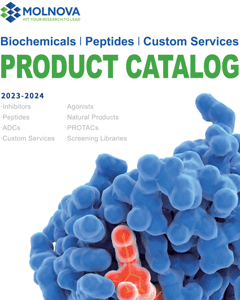
Phenylacetic acid
CAS No. 103-82-2
Phenylacetic acid( —— )
Catalog No. M19689 CAS No. 103-82-2
Phenyl acetate (or phenylacetate) is a carboxylic acid ester that has been found in the biofluids of patients with nephritis and/or hepatitis as well as patients with phenylketonuria (PKU) an inborn error of metabolism. Excess phenylalanine in the body can be disposed of through a transamination process leading to the production of phenylpyruvate.
Purity : >98% (HPLC)
 COA
COA
 Datasheet
Datasheet
 HNMR
HNMR
 HPLC
HPLC
 MSDS
MSDS
 Handing Instructions
Handing Instructions
| Size | Price / USD | Stock | Quantity |
| 100MG | Get Quote | Get Quote |


|
| 200MG | Get Quote | Get Quote |


|
| 500MG | Get Quote | Get Quote |


|
| 1G | Get Quote | Get Quote |


|
Biological Information
-
Product NamePhenylacetic acid
-
NoteResearch use only, not for human use.
-
Brief DescriptionPhenyl acetate (or phenylacetate) is a carboxylic acid ester that has been found in the biofluids of patients with nephritis and/or hepatitis as well as patients with phenylketonuria (PKU) an inborn error of metabolism. Excess phenylalanine in the body can be disposed of through a transamination process leading to the production of phenylpyruvate.
-
DescriptionPhenyl acetate (or phenylacetate) is a carboxylic acid ester that has been found in the biofluids of patients with nephritis and/or hepatitis as well as patients with phenylketonuria (PKU) an inborn error of metabolism. Excess phenylalanine in the body can be disposed of through a transamination process leading to the production of phenylpyruvate. The phenylpyruvate can be further metabolized into a number of products. Decarboxylation of phenylpyruvate gives phenylacetate while a reduction reaction gives phenyllactate. The phenylacetate can be further conjugated with glutamine to give phenylacetyl glutamine. All of these metabolites can be detected in serum and urine of PKU patients. Phenyl acetate is also produced endogenously as the metabolite of 2-Phenylethylamine which is mainly metabolized by monoamine oxidase to form phenyl acetate. 2-phenylethylamine is an "endogenous amphetamine" which may modulate central adrenergic functions and the urinary phenyl acetate levels have been postulated as a marker for depression. Phenylacetate is also found in essential oils e.g. neroli rose oil free and as esters' and in many fruits. As a result it is used as a perfumery and flavoring ingredient.
-
In Vitro——
-
In Vivo——
-
Synonyms——
-
PathwayProteasome/Ubiquitin
-
TargetEndogenous Metabolite
-
RecptorHuman Endogenous Metabolite
-
Research Area——
-
Indication——
Chemical Information
-
CAS Number103-82-2
-
Formula Weight136.15
-
Molecular FormulaC8H8O2
-
Purity>98% (HPLC)
-
SolubilityDMSO:10 mM
-
SMILESOC(=O)Cc1ccccc1
-
Chemical Name——
Shipping & Storage Information
-
Storage(-20℃)
-
ShippingWith Ice Pack
-
Stability≥ 2 years
Reference



-
L-Lactic acid
Lactic acid is an organic acid. It is a chiral molecule consisting of two optical isomers L-lactic acid and D-lactic acid with the L-isomer being the most common in living organisms. Lactic acid plays a role in several biochemical processes and is produced in the muscles during intense activity.
-
CMP-Sialic acid sodi...
CMP-Sialic acid sodium salt (CMP-Neu5Ac sodium salt) is a variant inhibitor of UDP-GlcNAc 2-epimerase, the activated form of sialic acid, which is widely found in animals and is involved in the metabolism of organisms.
-
5-Aminovaleric acid
5-aminovalerate (or 5-aminopentanoic acid) is a lysine degradation product. It can be produced both endogenously or through bacterial catabolism of lysine.



 Cart
Cart
 sales@molnova.com
sales@molnova.com


